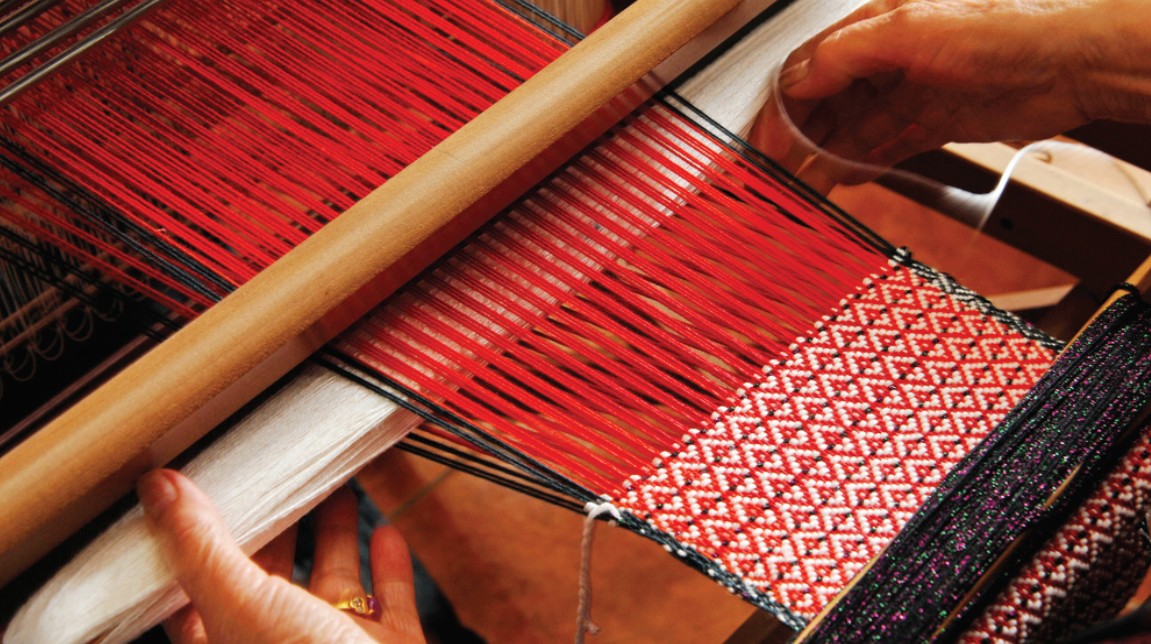Nestled in the heart of South Asia, Bangladesh is a country brimming with cultural diversity and artistic heritage. Its landscapes are adorned not only with lush greenery and tranquil rivers but also with the intricate tapestries of its rich artistic traditions. From the delicate threads of Dhaka muslin to the exquisite motifs of Jamdani, and from the rhythmic clatter of handlooms to the sustainable beauty of bamboo products, Bangladesh’s cultural and heritage offerings are as vibrant and varied as the nation itself. These creations, crafted with passion and passed down through generations, bear witness to the resilience and creativity of a people deeply connected to their past and fervently embracing their future.
In a world marked by rapid industrialization and homogenization, these cultural and heritage products stand as a testament to the enduring power of human creativity and the importance of preserving cultural identity. Beyond their aesthetic allure, these artifacts are a repository of history, stories, and traditions. Each thread is woven into a Jamdani saree, each strand of Dhaka muslin delicately crafted, and each stroke of a bamboo artisan’s hand contributes to a narrative that bridges the gap between generations and connects us to the tapestry of human experience. These products do more than adorn homes or bodies; they serve as tangible links to the past, evoking a sense of pride and nostalgia while pointing toward a future where tradition and innovation coexist harmoniously.
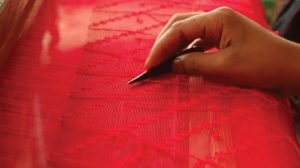
Jamdani: Weaving Elegance and Tradition
Jamdani, a masterpiece of Bangladesh’s textile heritage, stands as a testament to the intricate craftsmanship of its weavers. This fine and rich muslin fabric has adorned royalty and commoners alike for centuries, serving as a symbol of identity, dignity, and elegance. The art of Jamdani weaving has been passed down through generations, with families dedicating themselves to this craft for decades.
The heart of Jamdani production lies in Jamdani Palli, an industrial estate where weavers come together to create these exquisite fabrics. The area, also known as BSCIC Nagari, boasts around 1,600 skilled “taanties” (weavers) who weave Jamdani manually, using traditional techniques and wooden spinning wheels. Every thread of a Jamdani saree is a labor of love, taking anywhere from a week to a year to complete, depending on the complexity and quality of the design.
Once confined to sarees, Jamdani’s versatility has expanded to include three-piece ensembles, panjabis, curtains, and wall mats. This evolution showcases the adaptability of the artisans to meet modern market demands while staying true to their heritage. Despite its recognition as a Geographical Indication (GI) product of Bangladesh, Jamdani still requires more promotion to gain widespread appreciation both domestically and internationally.
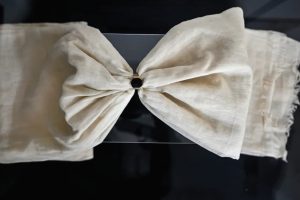
Reviving the Glory of Dhakaiya Maslin
Dhaka muslin, a fabric so fine that it was believed to render its wearer seemingly naked in different lighting, was once a symbol of opulence and luxury. However, the art of weaving this delicate fabric almost faded into obscurity. In recent years, determined efforts have been made to resurrect this ancient art form.
The revival project entailed a quest to locate the specific cotton plant, Phuti Carpus, needed to weave Dhaka muslin. Through meticulous research and collaboration with museums worldwide, the plant’s genetic samples were found, leading to its successful cultivation in experimental farms. The process of weaving Dhaka muslin requires immense concentration and skill, with artisans working painstakingly to create a fabric that once graced the wardrobes of historical figures like Marie Antoinette and Jane Austen.
The resurrection of Dhaka muslin serves as a reminder of Bangladesh’s rich history and its ability to preserve and revive its cultural heritage even in the face of challenges. As the world embraces mass-produced textiles, this revival project is a tribute to the enduring beauty of handcrafted treasures.
Threads of Royalty: Exploring the Majesty of Rajshahi Silk
Rajshahi silk, an epitome of luxury and elegance, weaves a tale of opulence that resonates through the annals of history. Nestled in the heart of the Mughal era, this ancient city in Bangladesh once thrived as a prominent center for silk production in the Indian subcontinent. The soft and lustrous silk derived from the cocoons of the mulberry silkworm holds a distinguished place in the realm of textiles, revered globally for its graceful sheen and sumptuous feel. Rajshahi silk, often hailed as the “queen of fibers,” stands as a testament to the rich tradition of sericulture that has been practiced for centuries, drawing inspiration from a legacy that traces back to the Mughal dynasties.
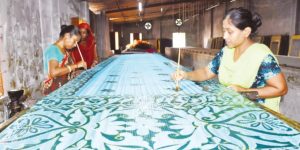
In the midst of its modern renaissance, Rajshahi silk continues to captivate the fashion world with its resplendent fabrics. The vibrant hues, intricate designs, and exquisite craftsmanship of Rajshahi silk sarees and garments reflect the skillful hands and artistic sensibilities of local artisans. Renowned manufacturers such as Sopura Silk, Usha Silk, Rajshahi Silk Fashion, and others are at the forefront of this revival, infusing fresh life into traditional designs and captivating a new generation of patrons. These silk creations, whether in the form of bolaka karchupi, sui-suta katan, joyashri, or other varieties, embody the essence of a city where heritage meets innovation.
Rajshahi silk’s journey from historical prominence to its resurgence in the modern era showcases the resilience of a craft deeply ingrained in the cultural fabric of Bangladesh. As it continues to adorn runways, special occasions, and everyday wear, Rajshahi silk stands not only as a luxurious fabric but also as a living testament to the enduring legacy of craftsmanship, weaving together the threads of tradition and contemporary allure in a fabric that truly reigns supreme.
Taat and Handloom Products: The Essence of Artistry
Beneath the skilled hands of artisans, taat or handloom products come to life, reflecting the soul of Bangladeshi culture and craftsmanship. Taat weaving is not only a traditional craft but also a means of livelihood for many communities. These products range from shatranji, rugs, placemats, and sitting mats, to carpets, each weaving together a piece of Bangladesh’s history.
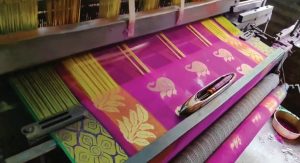
The journey of shatranji, for example, has seen both triumph and adversity. Once a flourishing industry during the British era, shatranji weavers faced challenges with the rise of machine-made products and fluctuating market demands. In recent times, efforts have been made to preserve and revive this heritage art form, with initiatives such as training programs for women in weaving and calls for government support.
Similarly, the handloom industry has faced its own set of challenges, including the rising prices of raw materials and competition from mass-produced textiles. However, artisans persevere, keeping their craft alive by weaving a tapestry of tradition and innovation.
Bamboo Products: Crafting Sustainability and Tradition
Bamboo, a versatile and sustainable resource, plays a significant role in Bangladesh’s cultural and heritage products. From household items to intricate crafts, bamboo products showcase the fusion of tradition with contemporary design. The art of bamboo weaving has been passed down through generations, with artisans creating products that range from baskets, mats, and furniture, to decorative items.
Bamboo products not only celebrate the country’s rich cultural heritage but also contribute to environmental sustainability. Bamboo, known for its rapid growth and minimal environmental impact, serves as a sustainable alternative to traditional materials. Artisans harness the inherent qualities of bamboo to craft products that resonate with modern sensibilities while paying homage to ancestral traditions.
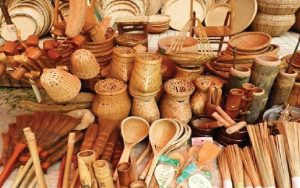
Preserving the Past, Nurturing the Future
Bangladesh’s cultural and heritage products embody the essence of its history, creativity, and resilience. From the intricate designs of Jamdani to the delicate threads of Dhaka muslin, these treasures reflect the dedication of artisans who have upheld their craft through generations. As Bangladesh strides forward into the modern world, it is crucial to preserve these art forms, providing artisans with the support they need to continue their legacy.
Initiatives such as training programs, access to finance, and the exploration of international markets can breathe new life into these heritage products. By recognizing the value of these treasures, both economically and culturally, Bangladesh can ensure that its past remains intertwined with its future, creating a tapestry of tradition that resonates across borders.
In conclusion, the cultural and heritage products of Bangladesh encapsulate the soul of a nation, capturing its essence in threads, fabrics, and weaves. As Bangladesh moves forward in the global landscape, these treasures serve as a reminder that progress need not come at the expense of tradition. By nurturing and celebrating these art forms, Bangladesh safeguards its unique cultural legacy and ensures that the world continues to be enriched by the beauty and ingenuity of its artisans. As we explore the intricate designs of Jamdani, the delicate grace of Dhaka muslin, and the rhythmic artistry of handloom and bamboo products, we embark on a journey through time and culture, recognizing that the tapestry of Bangladesh’s heritage is a masterpiece woven by countless hands across generations.
Written by-
Bably Yasmin
Creative and Multimedia Editor, Diplomats Publication

